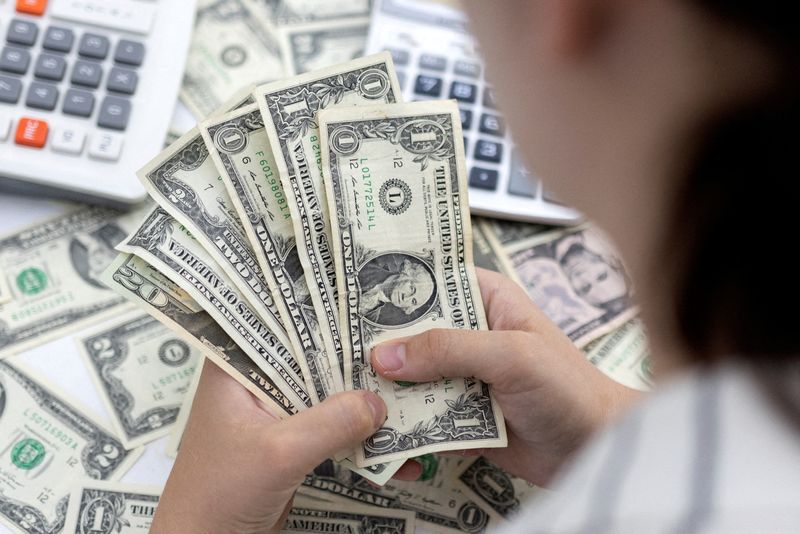 © Reuters. FILE PHOTO: Woman holds U.S. dollar banknotes in this illustration taken May 30, 2022. REUTERS/Dado Ruvic/Illustration/File Photo
© Reuters. FILE PHOTO: Woman holds U.S. dollar banknotes in this illustration taken May 30, 2022. REUTERS/Dado Ruvic/Illustration/File Photo
By Jamie McGeever
ORLANDO, Florida (Reuters) - Hedge funds have entered the final quarter of the year doubling down on two of their biggest macro conviction trades - short U.S. Treasuries and long the dollar.
According to U.S. futures market data, speculators are holding a record short position in two-year Treasuries, and are the most bullish on the dollar in a year.
The figures suggest funds are looking to accelerate the momentum of these trades into year-end, bets which appear to have been extremely profitable over the last couple of months.
The increase in funds' short Treasuries position across the two-year to 10-year maturity spectrum also indicates they are in no hurry to scale back their 'basis trade' bets, a leveraged arbitrage play profiting from the price difference between cash bonds and futures.
And with U.S. bond yields rising to the highest since 2006 and maintaining a wide gap over other countries' yields, funds are expanding their bullish dollar bets at the fastest rate since May last year.
These are some of the most notable findings of the latest Commodity Futures Trading Commission (CFTC) data for the week ending October 3.
In Treasuries, the data show that in the week through Oct. 3 funds grew their net short position in two-, five- and 10-year contracts by a combined 138,000 contracts, almost all of that in the two- and five-year space.
Funds' net short position in two-year futures is now a record 1.278 million contracts.
A short position is essentially a wager an asset's price will fall, and a long position is a bet it will rise. In bonds falling prices indicate higher yields, and vice versa.
But funds play bond futures for other reasons, like relative value trades, and this year, the 'basis trade' that has caught the attention of policymakers and regulators worried about the potential damage a sudden unwind could have on the market.
CFTC data show that leveraged funds - those speculators more active in the basis trade - increased their combined net short position in two-, five- and 10-year Treasuries futures by more than 100,000 contracts to 4.46 million contracts.
STERLING FLIP
In currencies, meanwhile, funds ramped up their broad, net long dollar position by $5.4 billion in the week to $8.45 billion. Funds have been turning more bullish on the dollar for seven weeks in a row, the longest streak since April 2021.
The move was driven by bearish swings in the dollar's three biggest rivals - the euro, the Japanese yen, and sterling.
The net long euro position was cut to 79,000 contracts, the smallest in nearly a year. That equates to a roughly $10 billion bet that the euro will strengthen - still pretty big, but half what it was only a month ago.
With the yen sinking back towards the 150.00 per dollar area, it is probably little surprise that funds boosted their net short yen position. At around 114,000 contracts, it is now close to July's 118,000, which was the biggest net short position since February 2018.
This is perhaps funds' most vulnerable FX position. If the Bank of Japan fleshes out a timeline of how and when it will phase out ultra-loose monetary policy and end 'yield curve control', the whiplash from a potential yen rally could be severe.
The CFTC data also showed that funds flipped to a net short sterling position for the first time since April. The unwind in recent weeks has been huge, and selling momentum is now the strongest in a year, momentum indicators show.
These FX and bond trades are in the money - yields and the dollar are marching higher. The HFRI Macro (Total) index rose 2.3% in September, the best performance since April last year, and the HFRI Macro Multi-Strategy index jumped 3.1%, its best month since February, 2021.
(The opinions expressed here are those of the author, a columnist for Reuters.)

